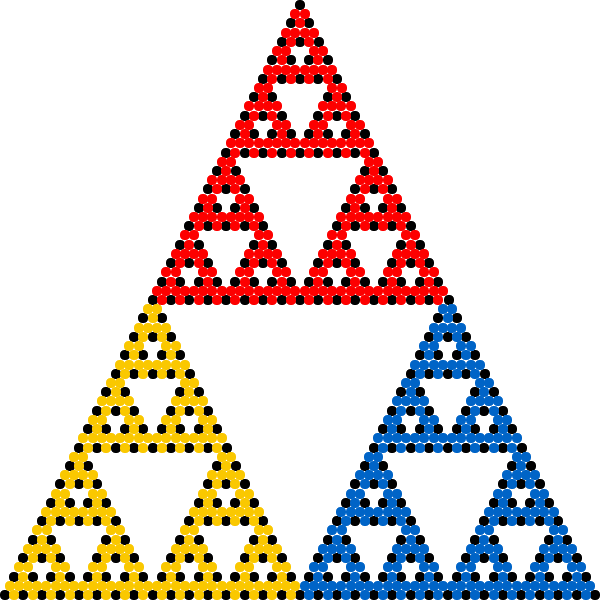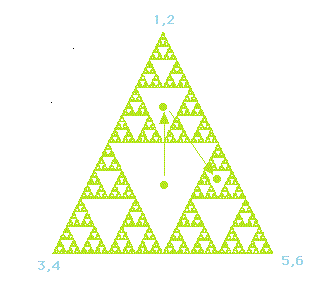Interactive three-dimensional simulations & visualizations
Visualizing the beauty in physics and mathematics
Project maintained by zhendrikse Hosted on GitHub Pages — Theme by mattgraham
Chaos game
The chaos game is an iterative procedure $s_i\rightarrow s_{i+1}$ that can be written as an affine transformation
$s_{i+1}=T_js_i+r_j$
where the set of pairs {$(T_j, r_j) | j=1,2,\dots$} with matrices $T_j$ and $r_j$ characterize the chosen ruleset and $j$ denotes a (per iteration) randomly chosen index. The famous Barnsley fern is generated in a similar way.
- This chaos_game.html is 100% Javascript, written by Zeger Hendrikse
- Inspired by nnakul/chaos-game by Nikhil Nakul
- A VPython version is available as well, see chaos_game.py
Why do fractals arise from the chaos game
The chaos game is an iterative process of placing dots on a canvas using certain fixed locations (vertices) that are chosen randomly. For example, in the animation below, the position of each new dot is halfway between the current position and one of the three fixed corners of a triangle.

Let’s assume we start with a point that is located in one of the areas that will eventually be empty, see the figure below.

After one iteration, the point will jump to either one of the three smaller empty triangles. Eventually after a couple of iterations, the point will enter a small triangle that is so small that, given the finite resolution of the screen and the pixels it contains, it will disappear.
In a certain sense, the fractal itself is a kind of strange attractor!
Example Python code
jump_points = [(-.5, .433), (.5, -.433), (0, .3)] # triangle vertices
colors = [color.green, color.cyan, color.red]
for i in range(40000):
index = int(random() * 3) # random vertex to jump to
x = .5 * (x + jump_points[index][0])
y = .5 * (y + jump_points[index][1])
pixels.append(pos=vec(x, y, 0), color=colors[index])
References
- Chaos game Wikipedia page
- Chaos Game — Numberphile
- A 1.58-Dimensional Object — Numberphile
- Fractal Dimensions (extra footage) - Numberphile
Share on: